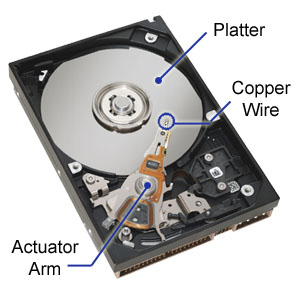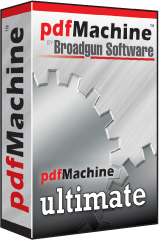
In computing, a device driver or software driver is a computer program allowing higher-level computer programs to interact with a hardware device.
A driver typically communicates with the device through the computer bus or communications subsystem to which the hardware connects. When a calling program invokes a routine in the driver, the driver issues commands to the device. Once the device sends data back to the driver, the driver may invoke routines in the original calling program. Drivers are hardware-dependent and operating-system-specific. They usually provide the interrupt handling required for any necessary asynchronous time-dependent hardware interface.
Purpose
A device driver simplifies programming by acting as a translator between a hardware device and the applications or operating systems that use it. Programmers can write the higher-level application code independently of whatever specific hardware device it will ultimately control, because code and device can interface in a standard way, regardless of the software superstructure or of underlying hardware. Every version of a device, such as a printer, requires its own hardware-specific specialized commands. In contrast, most applications utilize devices (such as a file to a printer) by means of high-level device-generic commands such as PRINTLN (print a line). The device-driver accepts these generic high-level commands and breaks them into a series of low-level device-specific commands as required by the device being driven. Furthermore, drivers can provide a level of security as they can run in kernel-mode, thereby protecting the operating system from applications running in user-mode.
Design
Device drivers can be abstracted[by whom?] into logical and physical layers. Logical layers process data for a class of devices such as ethernet ports or disk drives. Physical layers communicate with specific device instances. For example, a serial port needs to handle standard communication protocols such as XON/XOFF that are common for all serial port hardware. This would be managed by a serial port logical layer. However, the logical layer needs to communicate with a particular serial port chip. 16550 UART hardware differs from PL-011. The physical layer addresses these chip-specific variations. Conventionally, OS requests go to the logical layer first. In turn, the logical layer calls upon the physical layer to implement OS requests in terms understandable by the hardware. Inversely, when a hardware device needs to respond to the OS, it uses the physical layer to speak to the logical layer.
In Linux environments, programmers can build device drivers either as parts of the kernel or separately as loadable modules. Makedev includes a list of the devices in Linux: ttyS (terminal), lp (parallel port), hd (disk), loop (loopback disk device), sound (these include mixer, sequencer, dsp, and audio)... [1]
The Microsoft Windows .sys files and Linux .ko modules contain loadable device drivers. The advantage of loadable device drivers is that they can be loaded only when necessary and then unloaded, thus saving kernel memory.
Development
Writing a device driver requires an in-depth understanding of how the hardware and the software of a given platform function. Drivers operate in a highly privileged environment and can cause disaster if they get things wrong.[2] In contrast, most user-level software on modern operating systems can be stopped without greatly affecting the rest of the system. Even drivers executing in user mode can crash a system if the device is erroneously programmed. These factors make it more difficult and dangerous to diagnose problems.
Thus the task of writing drivers usually falls to software engineers who work for hardware-development companies. This is because they have better information than most outsiders about the design of their hardware. Moreover, it was traditionally considered in the hardware manufacturer's interest to guarantee that their clients can use their hardware in an optimum way. Typically, the logical device driver (LDD) is written by the operating system vendor, while the physical device driver (PDD) is implemented by the device vendor. But in recent years non-vendors have written numerous device drivers, mainly for use with free and open source operating systems. In such cases, it is important that the hardware manufacturer provides information on how the device communicates. Although this information can instead be learned by reverse engineering, this is much more difficult with hardware than it is with software.
Microsoft has attempted to reduce system instability due to poorly written device drivers by creating a new framework for driver development, called Windows Driver Foundation (WDF). This includes User-Mode Driver Framework (UMDF) that encourages development of certain types of drivers — primarily those that implement a message-based protocol for communicating with their devices — as user mode drivers. If such drivers malfunction, they do not cause system instability. The Kernel-Mode Driver Framework (KMDF) model continues to allow development of kernel-mode device drivers, but attempts to provide standard implementations of functions that are well known to cause problems, including cancellation of I/O operations, power management, and plug and play device support.
Apple has an open-source framework for developing drivers on Mac OS X called the I/O Kit.
Kernel-mode vs user-mode
Device drivers, particularly on modern[update] Windows platforms, can run in kernel-mode (Ring 0) or in user-mode (Ring 3).[3] The primary benefit of running a driver in user mode is improved stability, since a poorly written user mode device driver cannot crash the system by overwriting kernel memory.[4] On the other hand, user/kernel-mode transitions usually impose a considerable performance overhead, thereby prohibiting user mode-drivers for low latency and high throughput requirements.
Applications
Because of the diversity of modern[update] hardware and operating systems, drivers operate in many different environments. Drivers may interface with:
- printers
- video adapters
- network cards
- Sound cards
- local buses of various sorts — in particular, for bus mastering on modern systems
- low-bandwidth I/O buses of various sorts (for pointing devices such as mice, keyboards, USB, etc.)
- computer storage devices such as hard disk, CD-ROM and floppy disk buses (ATA, SATA, SCSI)
- implementing support for different file systems
- image scanners
- digital cameras
Common levels of abstraction for device drivers include:
- for hardware:
- interfacing directly
- writing to or reading from a Device Control Register
- using some higher-level interface (e.g. Video BIOS)
- using another lower-level device driver (e.g. file system drivers using disk drivers)
- simulating work with hardware, while doing something entirely different[citation needed]
- for software:
- allowing the operating system direct access to hardware resources
- implementing only primitives
- implementing an interface for non-driver software (e.g. TWAIN)
- implementing a language, sometimes quite high-level (e.g. PostScript)
Choosing and installing the correct device drivers for given hardware is often a key component of computer system configuration.[citation needed]
Virtual device drivers
Virtual device drivers represent a particular variant of device drivers. They are used to emulate a hardware device, particularly in virtualization environments, for example when a DOS program is run on a Microsoft Windows computer or when a guest operating system is run on, for example, a Xen host. Instead of enabling the guest operating system to dialog with hardware, virtual device drivers take the opposite role and emulate a piece of hardware, so that the guest operating system and its drivers running inside a virtual machine can have the illusion of accessing real hardware. Attempts by the guest operating system to access the hardware are routed to the virtual device driver in the host operating system as e.g. function calls. The virtual device driver can also send simulated processor-level events like interrupts into the virtual machine.
Virtual devices may also operate in a non-virtualized environment. For example a virtual network adapter is used with a virtual private network, while a virtual disk device is used with iSCSI.
Open drivers
- Printers: CUPS.
- Scanners: SANE.
- Video: Vidix, Direct Rendering Infrastructure
Solaris descriptions of commonly-used device drivers
- fas: Fast/wide SCSI controller
- hme: Fast (10/100 Mbit/s) Ethernet
- isp: Differential SCSI controllers and the SunSwift card
- glm: (Gigabaud Link Module[5]) UltraSCSI controllers
- scsi: Small Computer Serial Interface (SCSI) devices
- sf: soc+ or socal Fiber Channel Arbitrated Loop (FCAL)
- soc: SPARC Storage Array (SSA) controllers
- socal: Serial optical controllers for FCAL (soc+)
APIs
- Advanced Linux Sound Architecture (ALSA) - as of 2009[update] the standard Linux sound-driver interface
- I/O Kit - an open-source framework from Apple for developing Mac OS X device drivers
- Installable File System (IFS) - a filesystem API for IBM OS/2 and Microsoft Windows NT
- Network Driver Interface Specification (NDIS) - a standard network card driver API
- Open Data-Link Interface (ODI) - a network card API similar to NDIS
- Scanner Access Now Easy (SANE) - a public-domain interface to raster-image scanner-hardware
- Uniform Driver Interface (UDI) - a cross-platform driver interface project
- Windows Display Driver Model (WDDM) - the graphic display driver architecture for Windows Vista
- Windows Driver Foundation (WDF)
- Windows Driver Model (WDM)
Identifiers
- Device id is the device identifier and Vendor id is the vendor identifier.
See also
- Class driver
- Firmware
- Interrupt
- Loadable kernel module
- Makedev
- Open source hardware
- Printer driver
- udev










 11:54 PM
11:54 PM
 Ahsan Mirza
Ahsan Mirza

 Posted in:
Posted in: 



 Fastest P2P downloads on the planet
Fastest P2P downloads on the planet Server 1 Brothersoft(US mirror)
Server 1 Brothersoft(US mirror) 















































